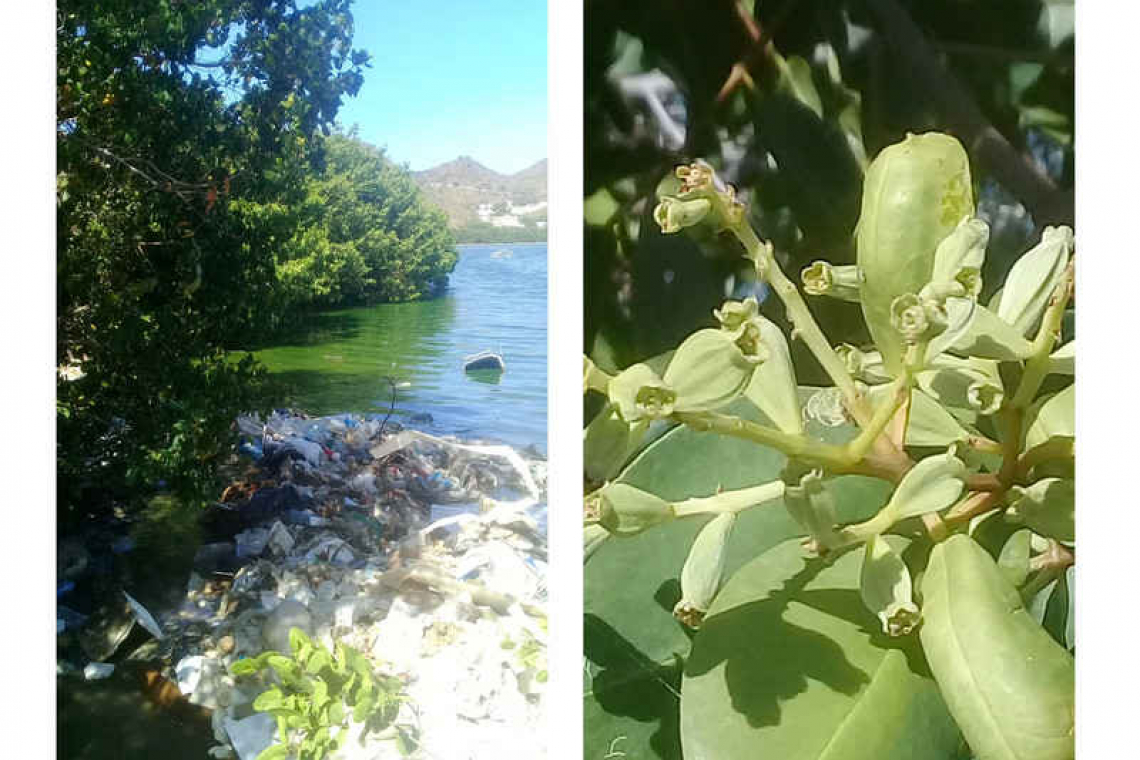By Isaiah
Hi, my name is Isaiah, and I’ve been doing some research on our ecosystems. I found out that we have to keep nature clean. If we take care of nature, nature will take care of us! One example is the coastal zone around the island. Nature grows special plants to protect the land and give fish places to grow up.
In fact, there are five coastal ecosystems on St. Maarten/St. Martin: Coral Reefs, Seagrass Beds, Mangroves, Salt Ponds, and Dry Coastal Forests.
Coral Reefs grow under water when the sunlight filters down. They are actually animals! They love being just under the waves. On a coral reef, some parts are hard like rock and some are soft like sponges or feathers. Fish and other marine animals love to hang out by the coral reefs – and a reef will stop big waves from hitting the land, so it forms a barrier that protects the island.
Seagrass Beds are also under water, usually very shallow water that you could wade through. There are all kinds of grasses found on the sand under the sea. If you look closely with a diving mask, you might find seahorses there, or star fish.
Mangroves are super important ecosystems that protect our shorelines. They have strong roots that form a web of protection for all kinds of baby animals that live in the sea. Big fish like to eat little fish, but they can’t get in between those mangrove roots. Also, those roots keep the land from washing away in a storm.
There are four kinds of mangroves: Black Mangrove (Avicennia germinans), Red Mangrove (Rhizophora mangle), White Mangrove (Laguncularia racemose), and Button Wood Mangrove (Conocarpus erectus). Each type grows in zones from the beach back inland. Red Mangrove tree seeds drop off the branches and float in the ocean, waiting until they touch a sandy shore before beginning to grow into a full tree. Over time, mangroves can make the island get bigger, because the roots keep holding onto the sand.
Salt Ponds are found near the sea, but they are on land. In St. Maarten, our most famous salt pond is located in Philipsburg between Bush Road and Sucker Garden Road. It’s called the Great Salt Pond and people used to harvest salt there by walking in the water and scooping up salt. That was very hard work! On the French side of St. Martin, there is a salt pond near Le Galion and another one near Grand Case. These ponds are where all of the salt that people used came from.
Dry coastal forests are seen on our hillsides, and they are another unique ecosystem. The dry forests are a home to many species, some of which are endemic, which means the plant or animal is found nowhere else on the planet. These forests are adapted to surviving through dry seasons, even if it doesn’t rain for a long time.
What impact does pollution and land development have on these five ecosystems? Pollution comes from people throwing away trash carelessly, or from spills from industrial businesses. This lets toxic material get caught up in the ecosystem and it kills plants and animals. Animals even get tangled up in old plastic bags and eat little bits of trash that make them sick. Land development takes place when someone cuts up natural land to make a place for a new building. If this happens a lot, there are no more homes for the animals. The soil loses its ability to stay in place and washes away whenever it rains. This makes too much dirt go into the sea and kills the sea grass beds and the coral reefs.
It is important to protect nature, and keep the island as it was before people started polluting and building too much. If we take care of nature, nature will take care of us. You can help. Put your trash in the garbage. Recycle when possible and join island clean ups.







